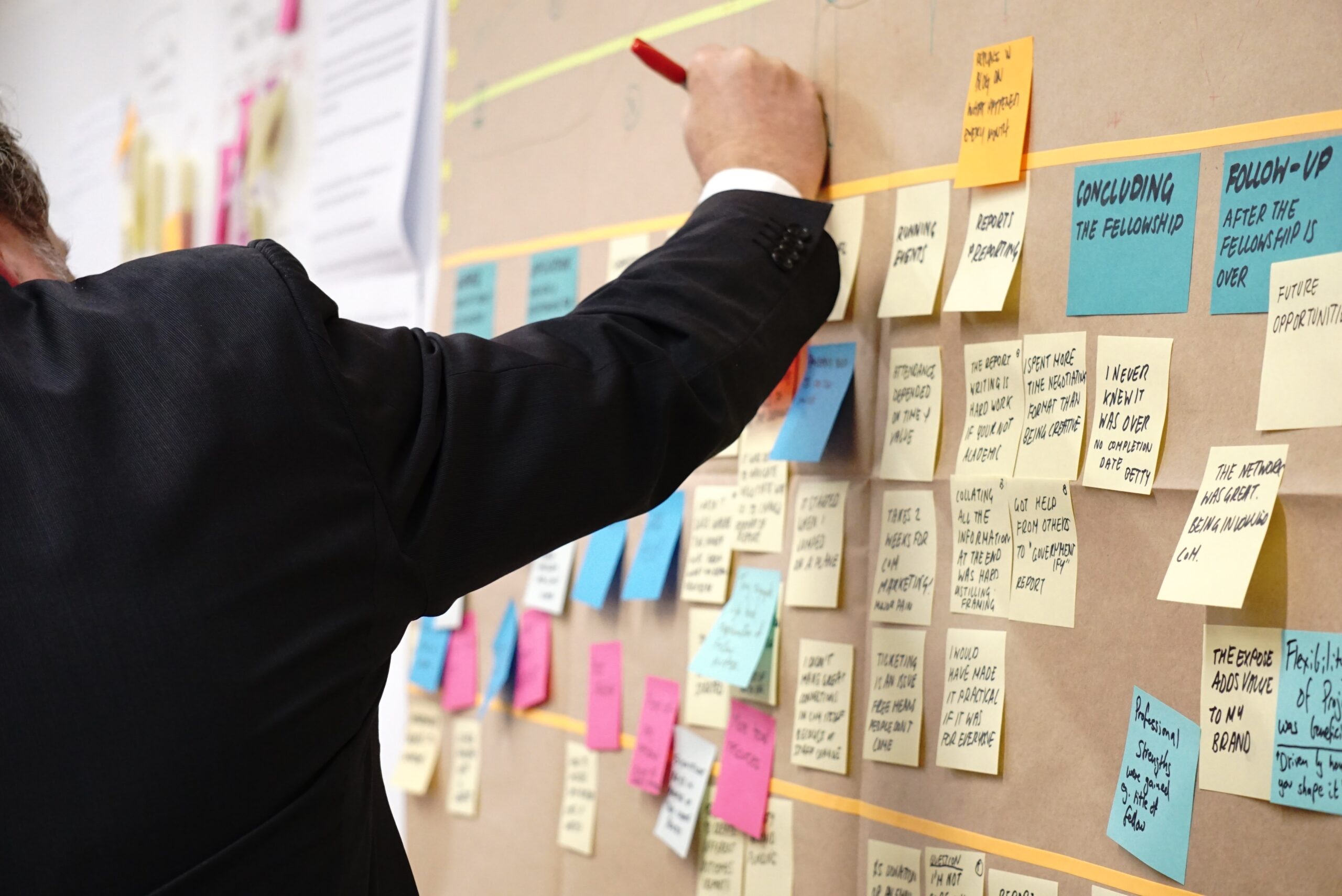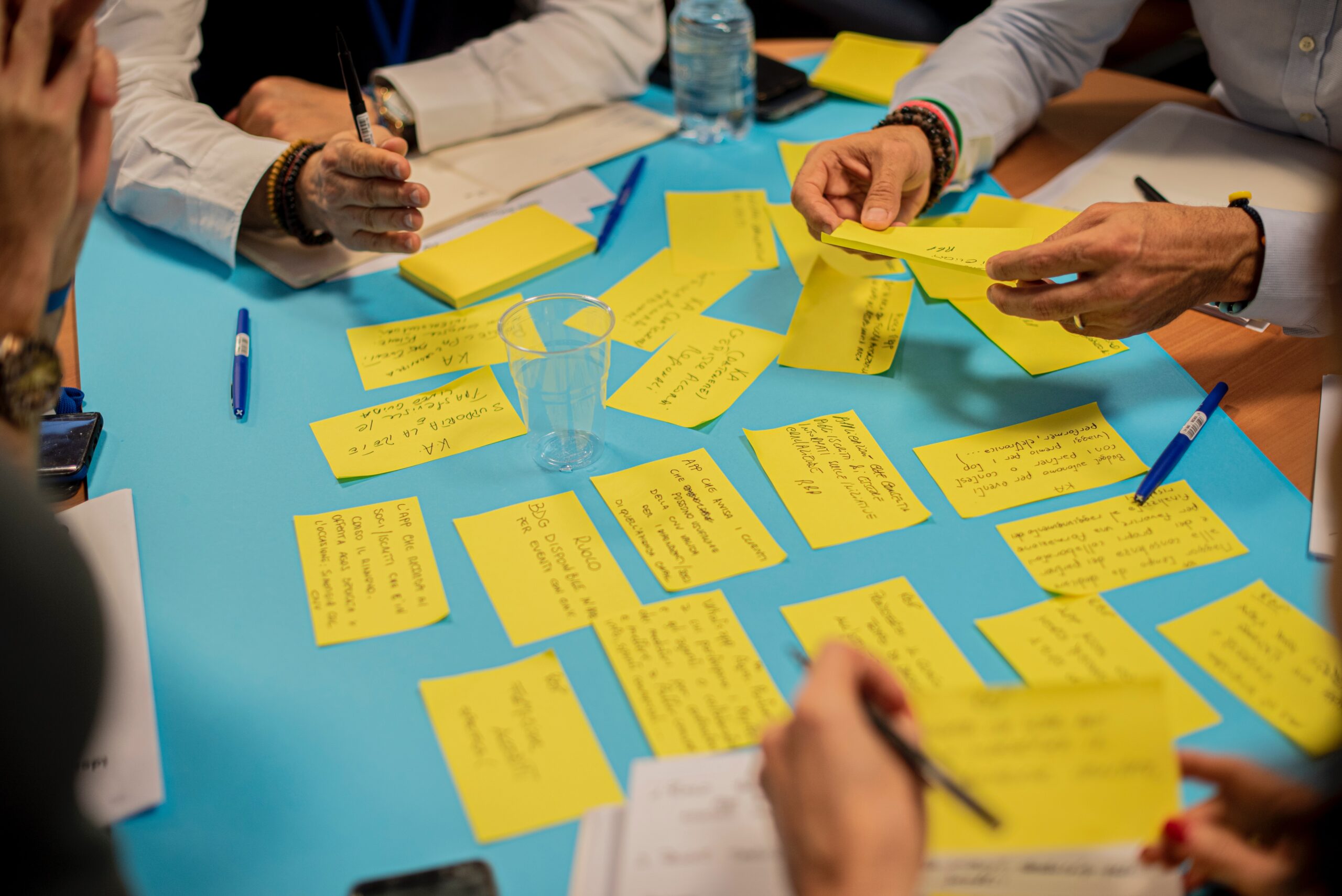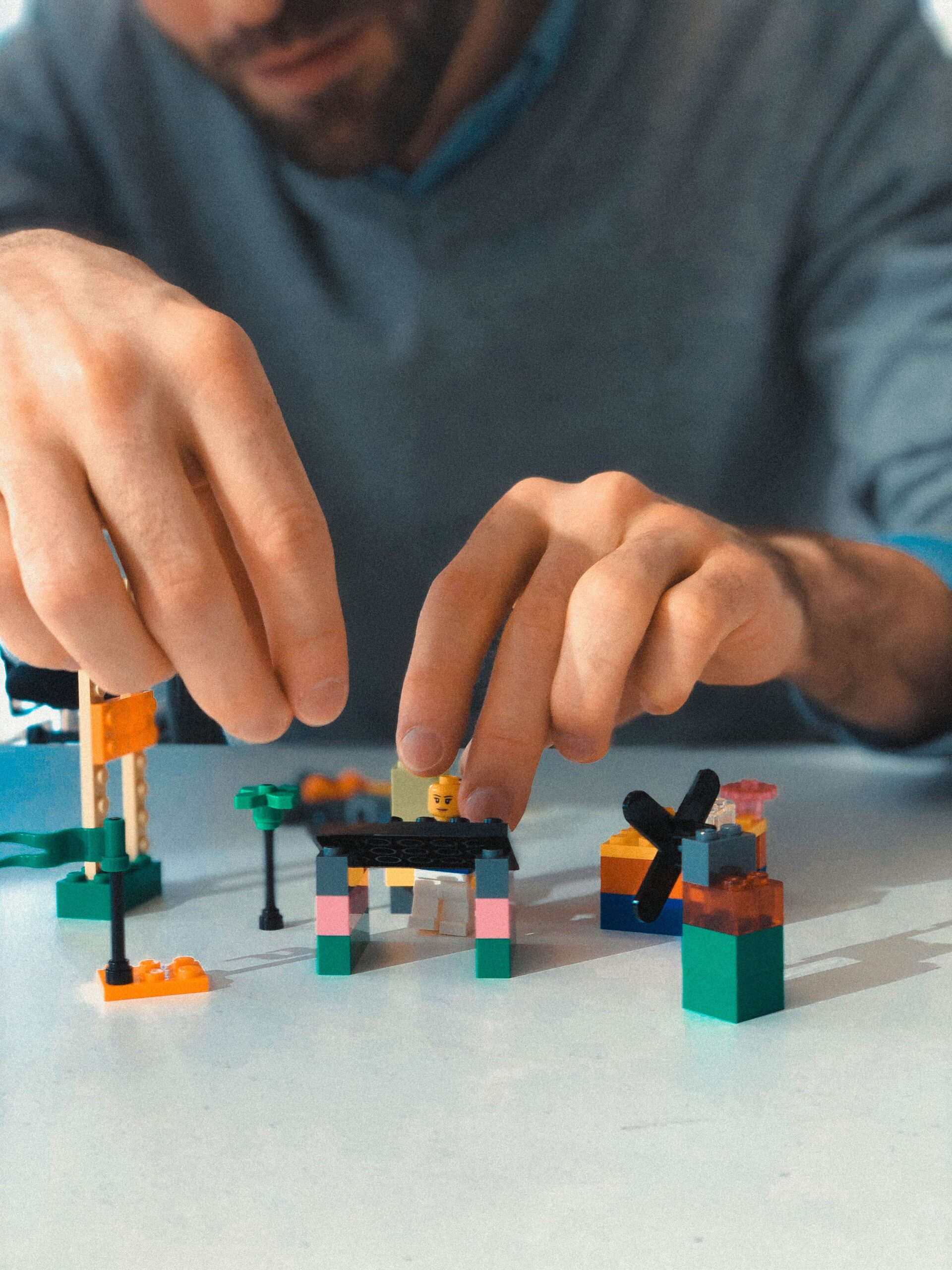Design Thinking is a design approach that emphasizes empathy, collaboration, and creativity in problem-solving and creating innovative solutions. In this process, the facilitator plays a key role as a catalyst for creativity and collaboration within the project team.
Who is a Facilitator in Design Thinking?
A Design Thinking facilitator (f/m/x) is someone who manages the design process and supports the team in using this method to achieve optimal results. This professional has a deep understanding of the principles and stages of Design Thinking and the ability to convey this knowledge, while also effectively guiding the team. The facilitator may take on various roles depending on the project’s needs, whether as a team leader, external consultant, or someone responsible for managing the design process within an organization.
Tasks of a Design Thinking Facilitator:
- Organizing a creative work environment
One of the facilitator’s main tasks is to create an inspiring and creative work environment for the team. The facilitator should foster an atmosphere of trust and openness, allowing team members to freely express their ideas and collaboratively generate new solutions. - Managing the design process
The facilitator is responsible for managing the entire design process, including planning, organization, and tracking progress. They must be able to efficiently coordinate the various stages of Design Thinking, set goals and deadlines, and monitor progress throughout the process. - Supporting the team in understanding users more deeply
In Design Thinking, empathy for users is key. The facilitator must support the team in gaining a deeper understanding of user needs and perspectives, using tools such as interviews, observations, or empathy mapping. - Facilitating brainstorming sessions
The facilitator plays a crucial role during brainstorming sessions, where the team generates ideas and explores different concepts. They must be able to stimulate creativity and inspire participants to think outside the box. - Analyzing and synthesizing information
The facilitator must be able to analyze the collected information, models, and ideas, and then synthesize them into cohesive and valuable solutions. The ability to draw conclusions and identify key elements is critical for effectively leading the process. - Ensuring collaboration and inclusion within the team
The Design Thinking facilitator must ensure collaboration and communication between team members. Their tasks also include resolving conflicts and strengthening bonds among participants. - Analyzing results and implementing solutions
After the design process is completed, the facilitator is responsible for analyzing the results and making recommendations for the team. They then support the implementation of selected solutions and monitor their effectiveness.
The Design Thinking facilitator is one of the key figures in the DT process. Their role as both a teacher and a catalyst for creativity, as well as a process manager, makes the facilitator an invaluable asset to the project team. Thanks to the professional work of the facilitator, the team can effectively harness the potential of this method and achieve valuable and innovative results throughout the design process.


